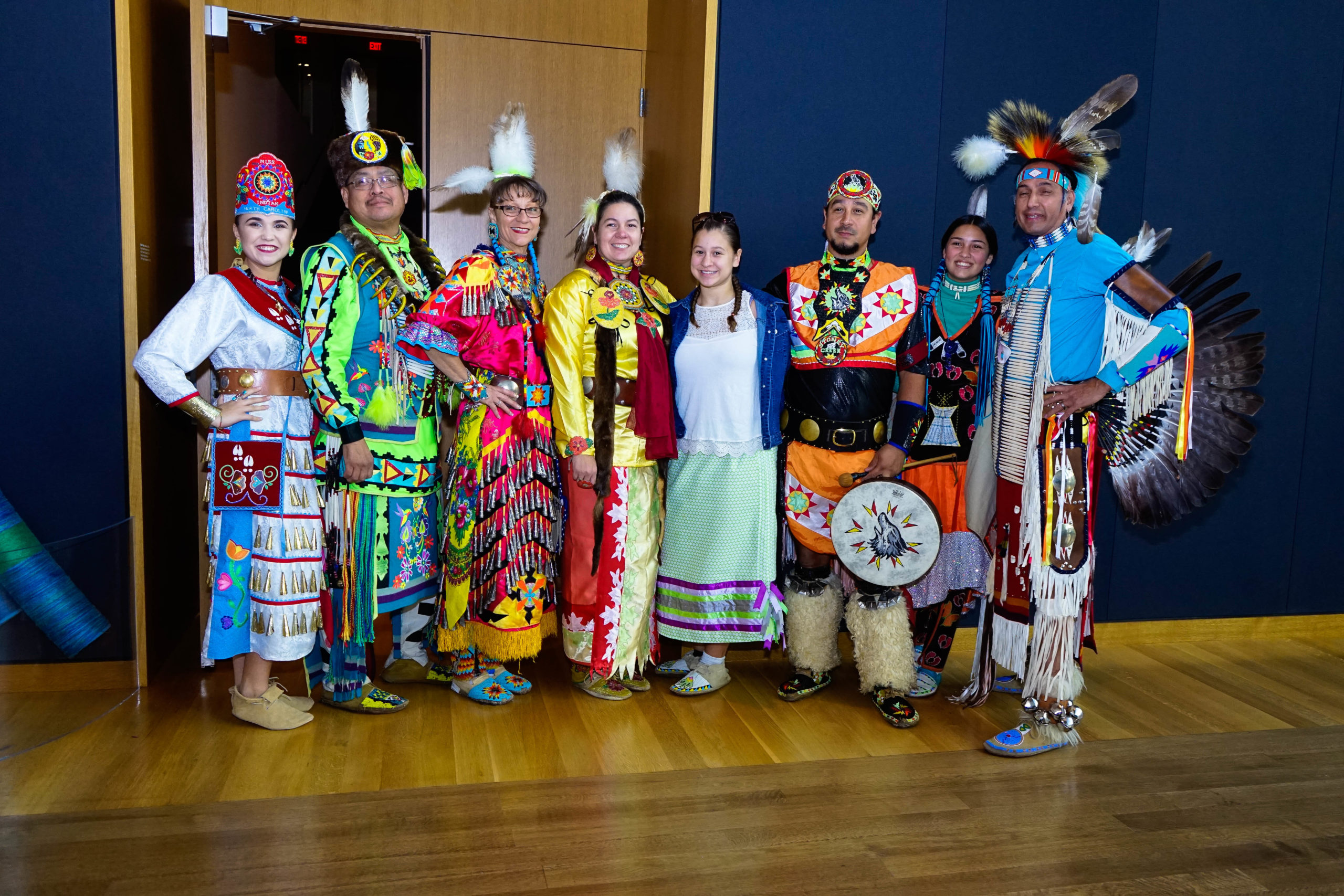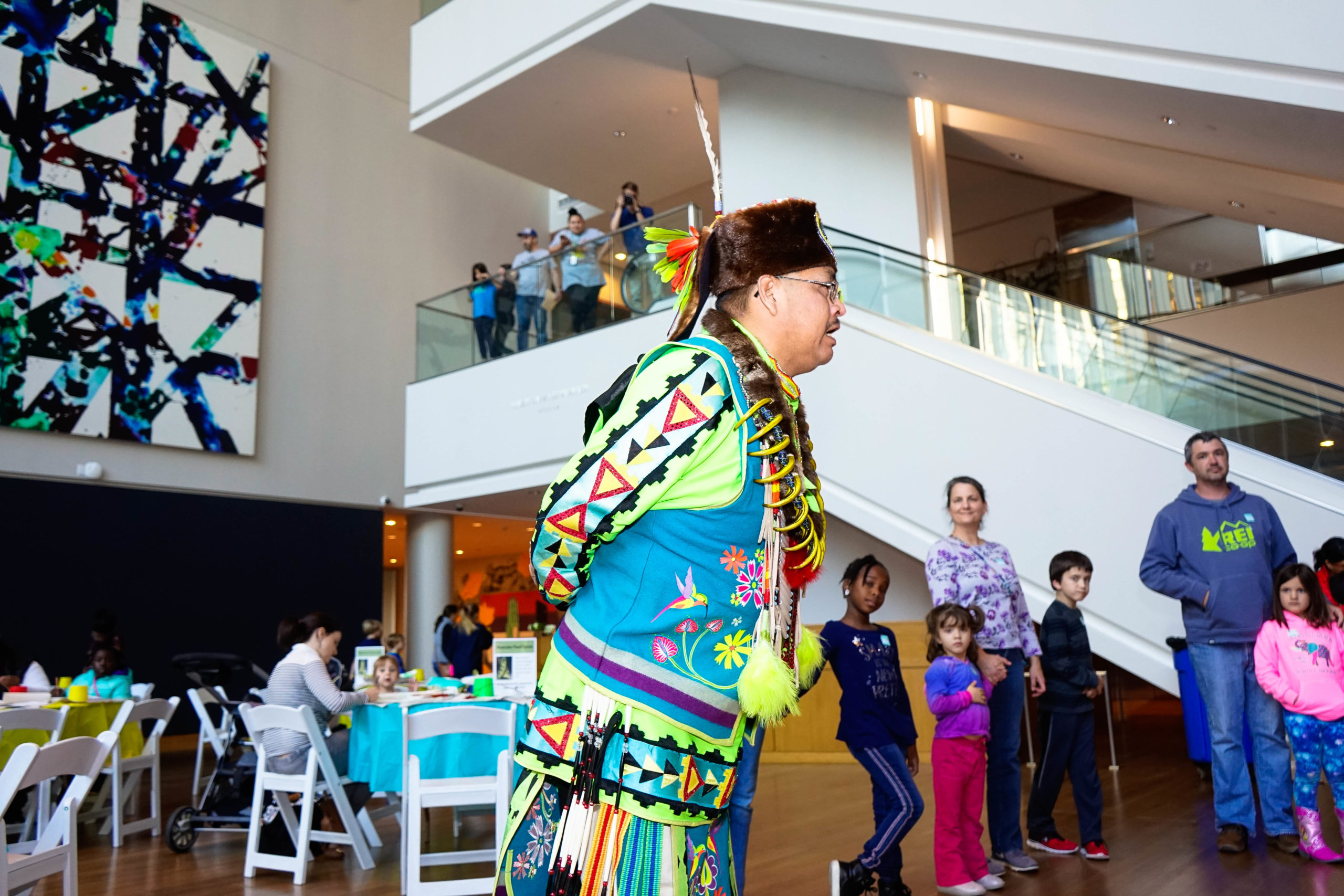
Members of the Metrolina Native American Association dressed in tribal colors and costume. Photo by Lance Bradshaw
Celebrating Indigenous Peoples’ Day
Compiled and written by Rubie Britt-Height and Kurma Murrain
Indigenous Peoples’ Day is a holiday that celebrates and honors Native American peoples, and commemorates their histories and cultures. It is celebrated across the United States on the second Monday in October.
In 2018, North Carolina Governor Roy Cooper proclaimed the second Monday in October as Indigenous Peoples’ Day in North Carolina. Cooper’s proclamation states “American Indians, who have inhabited this land since long before their first contact with English settlers, share their knowledge of the land and its resources, and have continued to play a vital role in the development of our local communities, the state of North Carolina and the nation.”
North Carolina has several indigenous peoples, including the Catawba, Eastern Band of Cherokee, Chickasaw, Choctaw, Coharie, Haliwa-Saponi, Meherrin, Muscogee, Occaneechi Band Saponi, Sappony, Waccamaw Siouan Seminole tribe, Lumbee, and Pamlico.
Governor Cooper noted, “Our state has enjoyed a positive relationship with the indigenous people of North Carolina and continue to grow in our shared progress. We honor and respect the heritage and the many cultural and economic contributions of our American Indian tribes and people.”

Dancers from the Metrolina Native American Association perform at a Sunday Fun Day and Community Conversations event at The Mint Museum. Authentic costumes with feathers, bells, leather, and beads brighten ceremonial and celebratory dances. The dances are a form of storytelling. Photo by Lance Bradshaw
The History of Indigenous Peoples’ Day
Indigenous Peoples’ Day began in 1989 in South Dakota, where then Governor George S. Mickelson backed a resolution to celebrate Native American day on the second Monday of October. It was a counter-celebration held on the same day as the U.S. federal holiday of Columbus Day, which honors Italian explorer Christopher Columbus. Some in the United States reject celebrating Christopher Columbus, saying that he represents “the violent history of the colonization in the Western Hemisphere” and that Columbus Day overshadows Columbus’ dismal actions, including enslaving Native Americans.
According to the Cherokee One Feather news, “Columbus’ landing in the Caribbean marked the beginning of decline among Native American tribes and the beginning of the Transatlantic slave trade.” Columbus Day is still celebrated the same day in many states, including by numerous Italian-American communities. The Mint Museum joins North Carolina’s celebration of Indigenous Peoples’ day and embraces the idea of acknowledging the historic sacrifices of indigenous people and their contributions to the United States. The museum is proud of its relationship with the Metrolina Native American Association in presenting cultural history, heritage, dance, storytelling, and music during Native American Heritage Month and programming presented with Catawba artists.

A diverse audience of parents, children, and the Native American community enjoyed circle and tribal dance to the rhythms of indigenous musical instruments at a Sunday Fun Day event in 2019. Photo by Lance Bradshaw